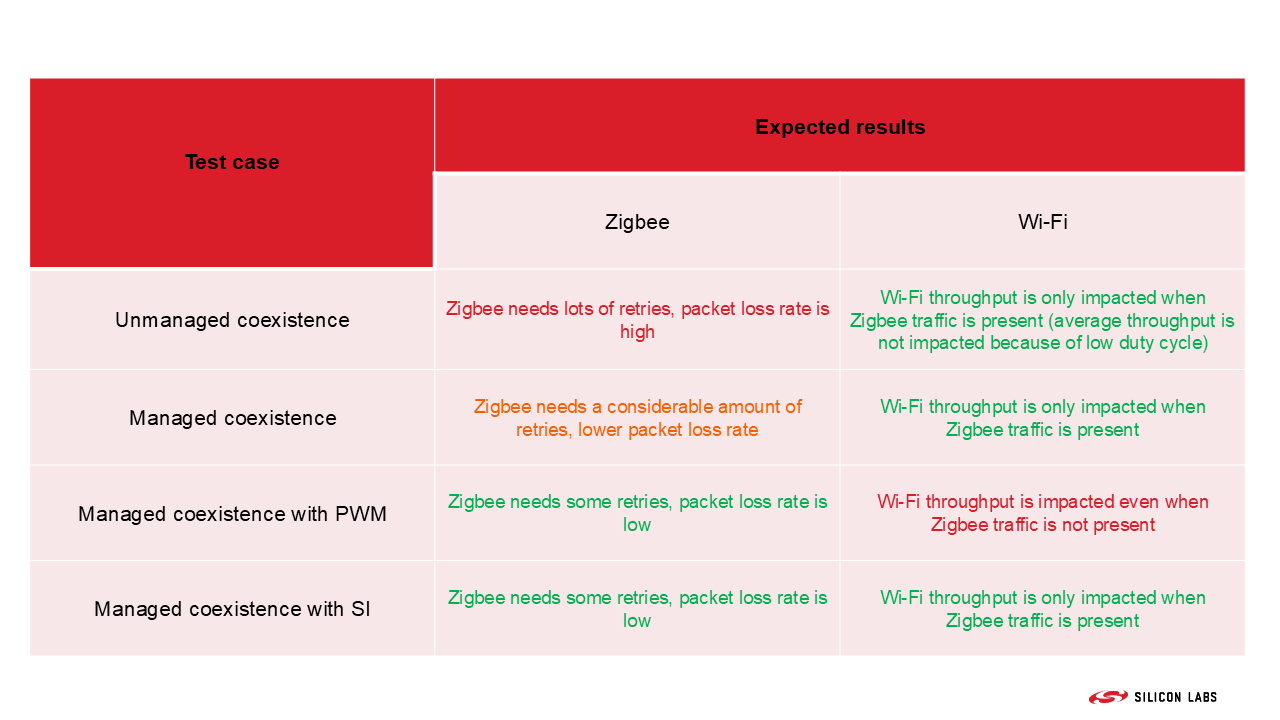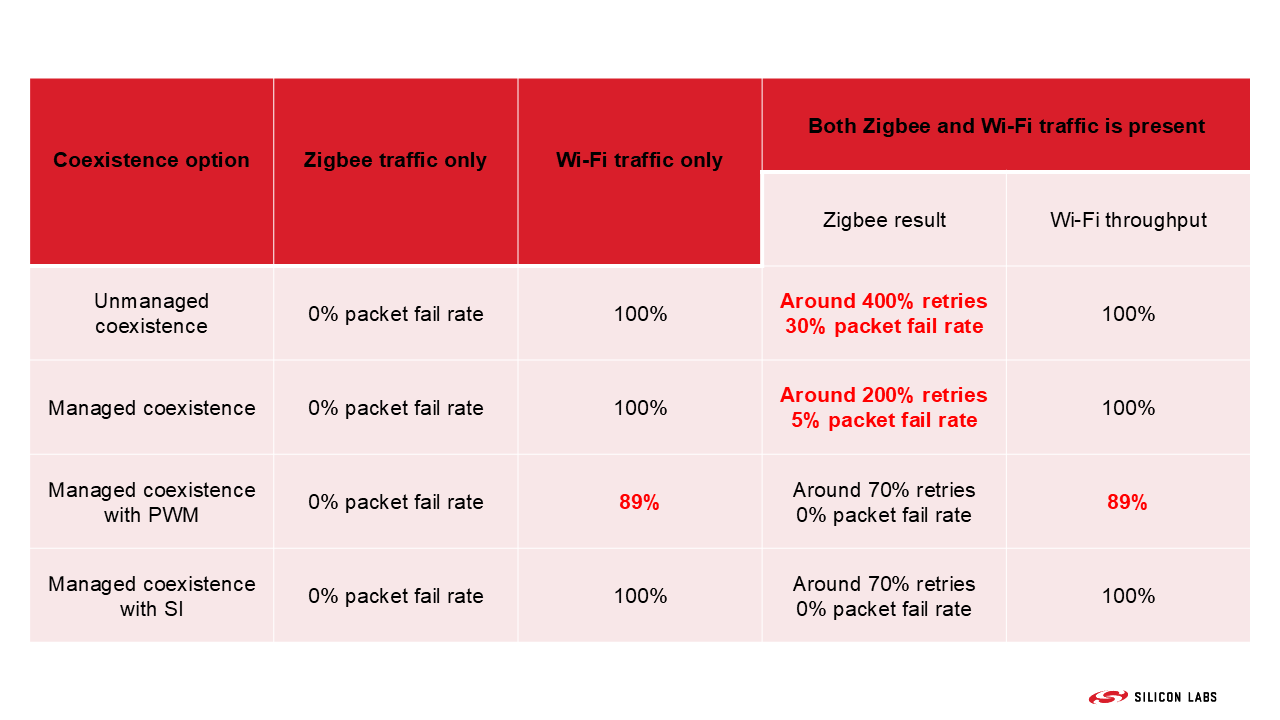Example Tests and Results from Silicon Labs#
This section provides the test results that were achieved using the setup described previously.
Based on the configurations used, the expected results can be seen in the picture below. These expectations are based on existing knowledge about how a coexistence scenario should play out, and how the different solutions should affect them.


Results#
The results of the testing efforts can be seen in the picture below. It can generally be said that the results match expectations quite well. As stated previously, these system level tests depend on a lot of variables, and the results are somewhat random in nature, as performance depends on the relative timings of different communication events, so these numbers are not 100% exact. Also, since these numbers have been measured in a single setup, they are most likely not directly relevant to any real world use case.
However, the general behavior seen is extremely relevant for all coexistence devices. As shown below, unmanaged coexistence comes with a high price from the Zigbee device: a high rate of application level packet fails with a huge amount of extra retries on the MAC level. In a real world scenario, these numbers would result in an unreliable Zigbee network with higher than normal current consumption for end nodes.
This can be eliminated using managed coexistence. For good RF performance, the PWM feature usually needs to be enabled. The main drawback of this is that it restricts Wi-Fi throughput even in times when there is no Zigbee traffic at all. In this case, throughput went down by about 10%. With the PWM setting, application layer packet fails could be reduced to 0%. This results in a reliable Zigbee connection, where no important pieces of information or commands are lost between the devices.
It can be seen in the results below that, with the unique Signal Identifier feature (in case the device uses a Silicon Labs device that supports it), good Zigbee numbers can still be achieved while preserving Wi-Fi throughput. In this case, Wi-Fi throughput is only affected when there is actual Zigbee traffic, which in most cases, means a very low duty cycle. In this case, a Zigbee packet was sent every 5 seconds during all tests. Therefore, the effect is not noticeable in the final results. This suggests that, if the design allows for the Wi-Fi device's "PA enabled" signal to be routed to an EFR GPIO, the Signal Identifier is a good option for an additional feature besides the usual PTA functionality.


Conclusion#
Based on the results achieved by this system level testing, coexistence is an important factor when designing devices that incorporate both low power (and low duty cycle) IoT protocols and Wi-Fi. Without a proper coexistence solution, the reception rates of the IoT protocol can be unacceptable for a given wireless application. The PTA solutions and features offered by Silicon Labs allow this problem to be solved without a large impact on Wi-Fi throughput.
